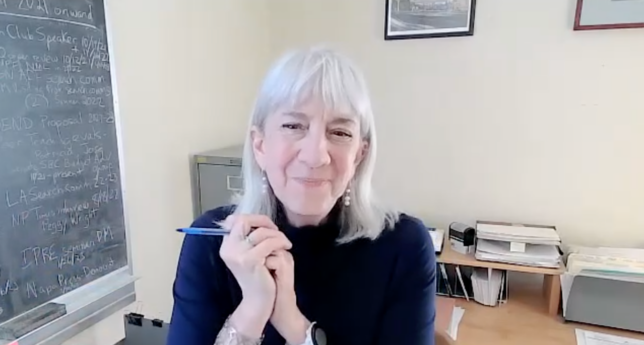Philanthropy
A Conversation with the University of Oregon’s Renée A. Irvin
The economist and scholar of the nonprofit sector and philanthropy talks to Michael E. Hartmann about the definition(s) of “dark money,” and her recent article, “How Dark Is It? An Investigation of Dark Money Operations in U.S. Nonprofit Political Advocacy Organizations.”
 Renée A. Irvin
Renée A. Irvin

Renée A. Irvin has been a professor at the University of Oregon’s School of Planning, Public Policy and Management since 2001. This month, she became the university’s vice provost for academic affairs.
An economist, Irvin’s research interests have long included, among other subjects, the economics and federal and state regulatory oversight of the nonprofit sector and philanthropy, particularly including the sources and effects of support for public-policy think tanks.
Irvin has taught courses and seminars on nonprofit fundraising, public and nonprofit financial management, and philanthropy and grantmaking. She founded and has directed the university’s Graduate Certificate in Nonprofit Management and its Master of Nonprofit Management programs, and she has directed its Master of Public Administration program. She was a Fulbright Scholar in China in 2009-10.
Irvin’s most-recent research product is the enlightening “How Dark Is It? An Investigation of Dark Money Operations in U.S. Nonprofit Political Advocacy Organizations,” published in Nonprofit Policy Forum. For “How Dark Is It?,” she studied nonprofits categorized as §501(c)(4) social-welfare groups under the Internal Revenue Code that are active in economic-policy advocacy. She presents an innovative index of transparency, based on nine observable characteristics—including the groups’ website content and, from publicly available tax filings, their board size, staffing, fundraising spending, relationships to other organizations, and other indicators.
The five most-transparent groups, according to index’s spectrum of “darkness,” are the centrist Fix the Debt Coalition, the left-of-center Citizen Action of Wisconsin, the right-of-center National Taxpayers Union, the left-of-center Friends Committee on National Legislation, and the right-of-center Ripon Society. There is no significant difference between the use of “dark money,” or degrees of “darkness” on the spectrum, by groups that would be considered on the right, on the left, or in the center.
Generally, Irvin writes in the article, (c)(4)
organizations enhance our democracy with a wide variety of beneficial activities. Surely, however, the presence of both left- and right-leaning dark money players in politics begs for a bipartisan intervention effort. If single or very small groups of corporations or individuals are the sole sources of the funding, this behavior places the very definition of a C4 social welfare organization under doubt: an organization “promoting the common good and general welfare of the community.” Further, the utilization of a C4 as an end run around Federal Election Commission campaign spending limits for individuals suggests that the C4 is functioning as a “straw donor” for that individual; a practice that is strictly illegal. [Citations omitted.]
“Publicly reporting the source of the largest donations (regardless of the circuitous re-granting route taken) would reveal the individuals behind the largest C4 political financing operations,” she concludingly notes. “Federal Election Commission regulations already perform this transparency function for political campaign gifts that are direct from small-donation individuals: This courtesy to the public should be extended by shutting down the C4 anonymizing loophole for large gifts.”
Irvin was kind enough to join me for a recorded conversation late last month. The almost 11-and-a-half-minute video below is the first of two edited parts of our discussion; the second is here. In the first part, we talk about the beginnings of her academic career, the definition(s) of “dark money,” and her “How Dark Is It?” article.
The almost 13-and-a-half-minute video below is the second part, during which she talks more about “How Dark Is It?,” applies some economic analysis to the use of (c)(4)s, and floats potential policy reform of (c)(4) status.
This article originally appeared in two parts in the Giving Review on July 10 and 11, 2023.


